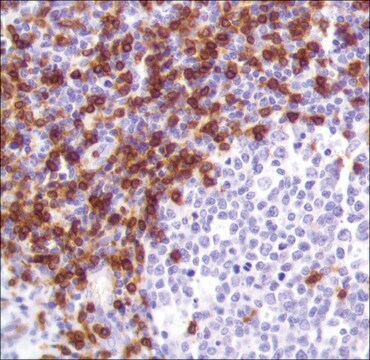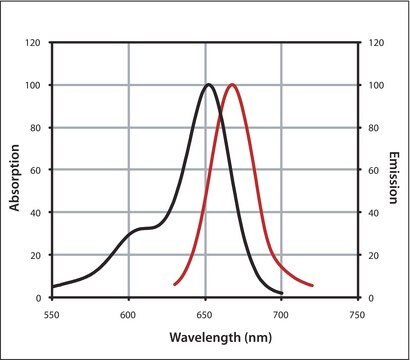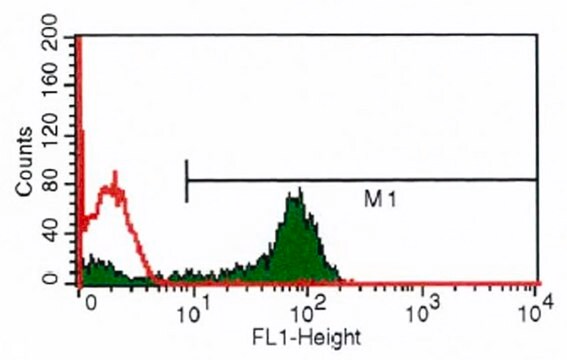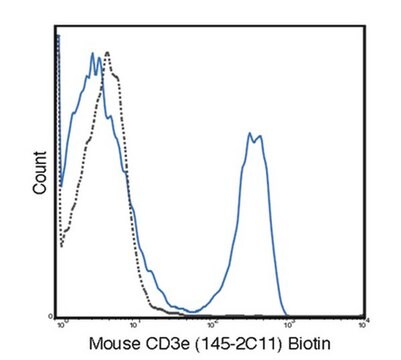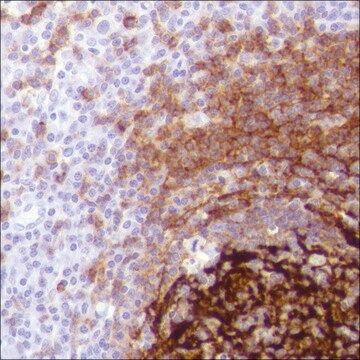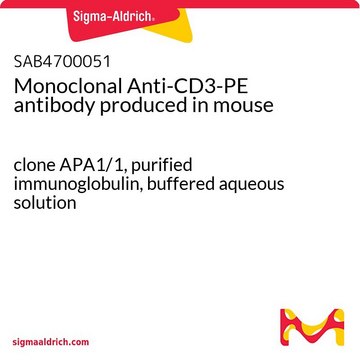SAB4700555
Monoclonal Anti-Cd3e-FITC antibody produced in hamster
clone 145-2C11, purified immunoglobulin, buffered aqueous solution
Synonym(s):
Anti-CD3
Sign Into View Organizational & Contract Pricing
All Photos(1)
About This Item
UNSPSC Code:
12352203
NACRES:
NA.44
conjugate:
FITC conjugate
application:
FACS
clone:
145-2C11, monoclonal
species reactivity:
mouse
citations:
2
technique(s):
flow cytometry: suitable
Recommended Products
biological source
hamster
Quality Level
conjugate
FITC conjugate
antibody form
purified immunoglobulin
antibody product type
primary antibodies
clone
145-2C11, monoclonal
form
buffered aqueous solution
species reactivity
mouse
concentration
0.5 mg/mL
technique(s)
flow cytometry: suitable
isotype
IgG
NCBI accession no.
UniProt accession no.
shipped in
wet ice
storage temp.
2-8°C
target post-translational modification
unmodified
Gene Information
mouse ... Cd3e(12501)
General description
The hamster monoclonal antibody 145-2C11 reacts with mouse CD3 (epsilon subunit). This antibody is commonly used as a phenotypic marker for mouse T cells.
Immunogen
Mouse BM10-37 cytotoxic T lymphocytes
Application
The reagent is designed for Flow Cytometry analysis. Suggested working dilution is 2 μg/mL of sample. Indicated dilution is recommended starting point for use of this product. Working concentrations should be determined by the investigator.
Features and Benefits
Evaluate our antibodies with complete peace of mind. If the antibody does not perform in your application, we will issue a full credit or replacement antibody. Learn more.
Physical form
Solution in phosphate buffered saline, pH 7.4, with 15 mM sodium azide.
Disclaimer
Unless otherwise stated in our catalog or other company documentation accompanying the product(s), our products are intended for research use only and are not to be used for any other purpose, which includes but is not limited to, unauthorized commercial uses, in vitro diagnostic uses, ex vivo or in vivo therapeutic uses or any type of consumption or application to humans or animals.
Not finding the right product?
Try our Product Selector Tool.
Storage Class
10 - Combustible liquids
flash_point_f
Not applicable
flash_point_c
Not applicable
Choose from one of the most recent versions:
Already Own This Product?
Find documentation for the products that you have recently purchased in the Document Library.
P Sempé et al.
Diabetologia, 37(4), 337-343 (1994-04-01)
The NOD mouse, which shows many features of human IDDM, is extensively used to evaluate the role of T lymphocytes in the pathogenesis of autoimmune diabetes. The development of diabetes in this model appears to be controlled by a finely
W R Han et al.
Transplant immunology, 7(4), 207-213 (2000-01-19)
In order to reduce the toxic effects of the T cell activating anti-CD3 monoclonal antibody, 145-2C11, F(ab')2 fragments were prepared by pepsin digestion. These fragments were then used as non-immunosuppressive carriers for the cytotoxic drug idarubicin (IDA), to reduce toxicity
Our team of scientists has experience in all areas of research including Life Science, Material Science, Chemical Synthesis, Chromatography, Analytical and many others.
Contact Technical Service
